Gardening with clay soils can be backbreaking work. I know because I’ve gardened in heavy clay soils before. I will spare you my stories of sore muscles and instead discuss ways to work with clay soil that will leave you with more time to enjoy being in your garden.
Not sure if you have clay soil? First, determine your soil type, and then move on to the solutions for gardening with clay soil below.
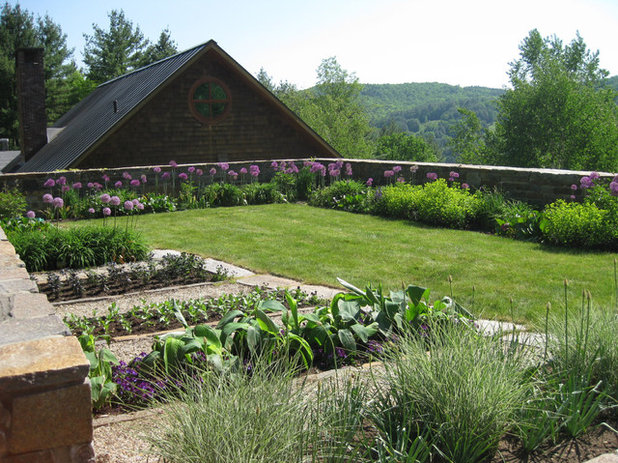
Saucier + Flynn, Ltd.
Clay Soil BasicsAmendments. Gardening in clay soil is a great workout, but I have learned the hard way that some plants — like root vegetables — just won’t thrive without heavily amended soil. If you are going to put the work and money into amending your clay soil, be strategic about where you do it. A raised veggie garden bed, or a garden bed near your front door or back porch is a great place to focus your amendments. The linear beds in this garden are nicely designed and easy to access, so amendments can be added on a regular basis.
Sand and compost are the most important amendments for clay soil. Sand that is well-graded (i.e. has a variety of particle sizes) and is added to make up 50 percent of the soil will improve drainage, but is an expensive method. Compost and mulch will work wonders for clay soil. (You will want to make your own compost, because you will be adding it to your clay at least once a year.)
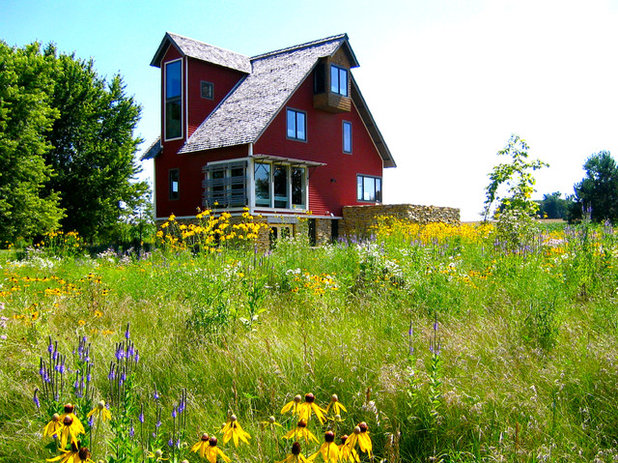
Locus Architecture
Understand what type of garden is achievable in clay soil. It would take a lot of work, for example, to turn your clay soil into a tender annual cutting garden without working in copious amounts of amendments. Work with what you have and you will be much happier in the long run. It is possible to amend your soil to the point that you are constructing a new type of soil. This is the method that many botanical gardens use to create special show gardens of drought-tolerant plants or wetland plants in areas without the correct soil type.
The meadow garden pictured here would likely thrive in a clay soil, because it includes a variety of prairie-type plants that tolerate clay.
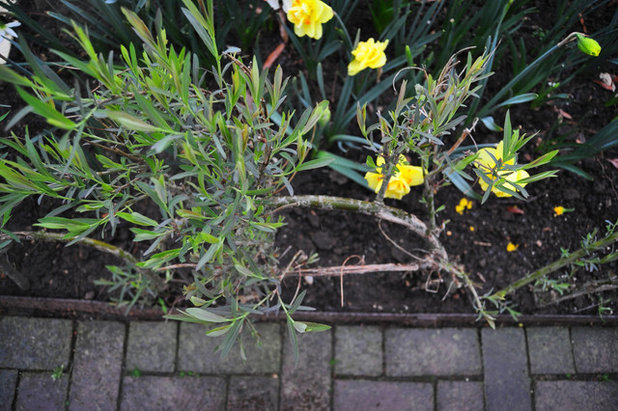
Amy Renea
Compaction. Clay soils compact more readily — the soil particles love to stick together — than other soil types. Walking on the garden beds or rolling the wheelbarrow around can compact the soil. And once it’s compacted, you are back to step one: Retill the soil to bring in air and nutrients to the plants’ roots.
Willows (
Salix spp) are tolerant of clay soils. The one seen here shows the fine, thin foliage that’s characteristic of the genus.

The Garden Consultants, Inc.
Wet soil. Never work your garden soil when it is soaking wet. If you work a clay soil when it is wet — even just a small amount of tilling — the soil will dry into rock-hard globs later that are nearly impossible to break apart. Working clay soil when it’s soaking wet also will greatly disturb the soil ecology. Resist the urge in early spring to work the soil. You will have a much easier time when the soil has fully thawed and opened up, with a texture more like cornbread.
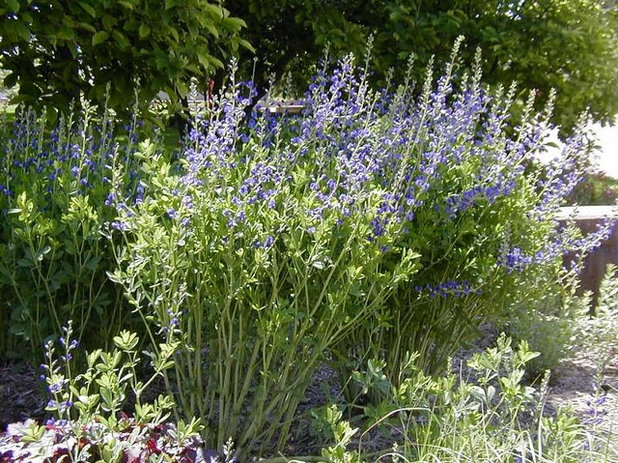
Missouri Botanical Garden
Clay-Tolerant PlantsMany native plants tolerate clay soils, but check with your nursery about a plant’s tolerance to clay before testing it in your garden. Clay can slow the growth and spread of some plants, but the true clay-tolerant species will thrive.
One of my favorites for Midwest clay soil is the graceful Baptisia. The pretty blue flowers in the photo here are on
Baptisia australis,
commonly known as false indigo or blue wild indigo. It has a deep taproot, which allows it to survive drought and penetrate the soil deeply.
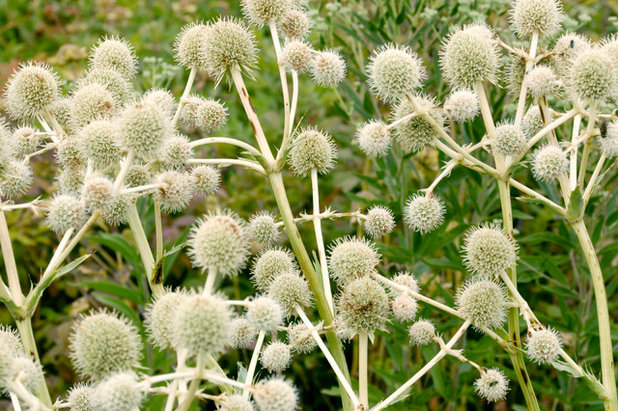
Frank Mayfield
This spiky flower is rattlesnake master (
Eryngium yuccifolium). It’s a funky plant with unstoppable vitality and vigor. Plant it carefully; even though it’s a native in the Midwest U.S., it can spread aggressively.
Additional clay-tolerant plants include redtwig dogwood (
Cornus sericea), switchgrass (
Panicum virgatum) and native species of
serviceberry (
Amelanchier spp),
linden (
Tilia spp) and
Viburnum spp.
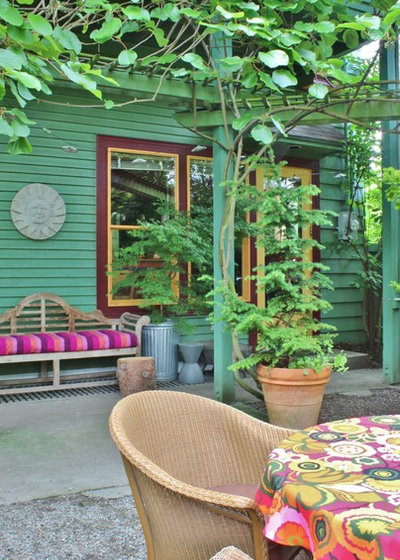
Kimberley Bryan
Vines are underutilized in the home landscape and are a great way to add dimension to the garden without a ton of work. The hardy kiwi vine (
Actinidia arguta) is pictured here on a wooden pergola. It’s hardy to zone 4 and produces edible fruit.
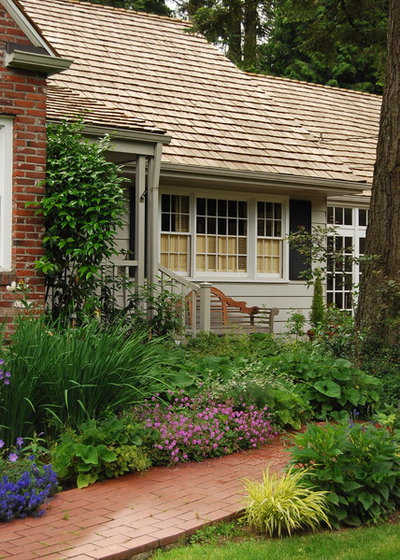
Samuel H. Williamson Associates
Planning the GardenPlan your garden as a composition of plants that work together. Think of your garden like a plant community, where the species interact to support one another and thrive.
The magic of the tallgrass prairie in the Midwest, for example, is that the plants grow to a range of very different root depths; the roots are able to pull moisture and nutrients from different areas of the soil. What clever plants! Armed with this knowledge, you too can mimic the prairie condition by planting different species that have different root types together.
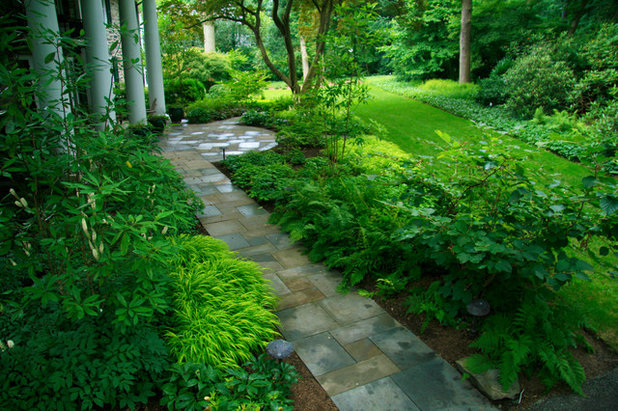
This lush shaded garden has a diversity of plant types with different root systems, and it looks lovely.
Types of roots to look for:
- Taproot: One large main root that can grow very deep. The theory is that taproots help anchor plants and allow them to survive in a drought, because they can pull water from deep within the soil. Taproots are among the most resilient root systems and will perform well in clay soil.
- Fibrous roots: Numerous wispy roots that form a thick mass and spread in all directions.
- Rhizome: A network of roots that sprout new plants at nodules along the root system. Also called runners, the plants can form colonies that are all connected underground.
Planted together, plants with different root systems will create a plant community over time.





